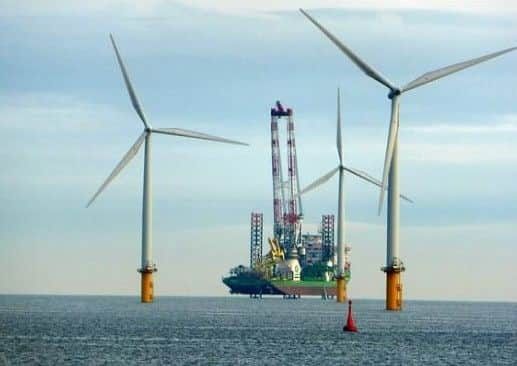Future vision for green Humber growth revealed


Ahead of its Annual Business Summit, the Humber Local Enterprise Partnership is launching ambitious plan to step up the region’s economic transformation and is seeking to agree an industrial strategy with ministers, setting out joint commitments between Government and local leaders to develop the Humber economy.


As well as eradicating CO2 levels to zero by 2040, it also wants to Humber Energy Estuary a global leader in clean energy and to deliver additional value to the UK economy through its ports, diverting traffic away from congested points of sea faring entry in the South of England.
Advertisement
Hide AdAdvertisement
Hide AdThe Humber area currently emits more CO2 than any other UK cluster and 30 per cent more than the next largest.
However bosses at the LEP acknowledge that the area is particularly vulnerable to climate change and say that decarbonisation is the both the most significant challenge and the greatest opportunity for its economy over the next two decades.
Critical to this will be strengthening the competitiveness of the Humber’s energy-intensive industries like steel, which contribute 20 per cent of the value of the region’s economy and are vital national assets.


This could see the Humber being the first UK region to roll out carbon capture technology at scale to capture any remaining emissions which cannot be eliminated from industrial processes, building on the current trial at Drax.
Advertisement
Hide AdAdvertisement
Hide AdOn wind power, bosses want the Humber to support at least half of the new wind capacity through manufacturing, construction and/or operations and maintenance.
Lord Haskins, Chair of the Humber LEP, said: “The Humber’s transformation over recent years has been remarkable, but continuing that momentum will be hard. Our proposals are designed to achieve that. This is a bold plan which has been shaped by business, supported by our local authority partners, and I hope it will be well received.
“It is a distinctive approach, playing to the Humber’s strengths and looking at where we have the biggest opportunities for growth, but also a realistic one recognising that we cannot be the best at everything.”
A recent Sector Deal agreed with the Government will see installed capacity rise substantially to 30GW by 2030 and 50GW by 2050.
Advertisement
Hide AdAdvertisement
Hide AdMost of this would be in the Humber region due to its central location.
Over 25,000 people are employed in the engineering and assembly sectors in the Humber and the LEP believes that it is an area where the Humber could attract further growth – leveraging the Humber ports, available large development sites, skills and proximity to transport networks.
The consultation begins today and runs until July 31.
